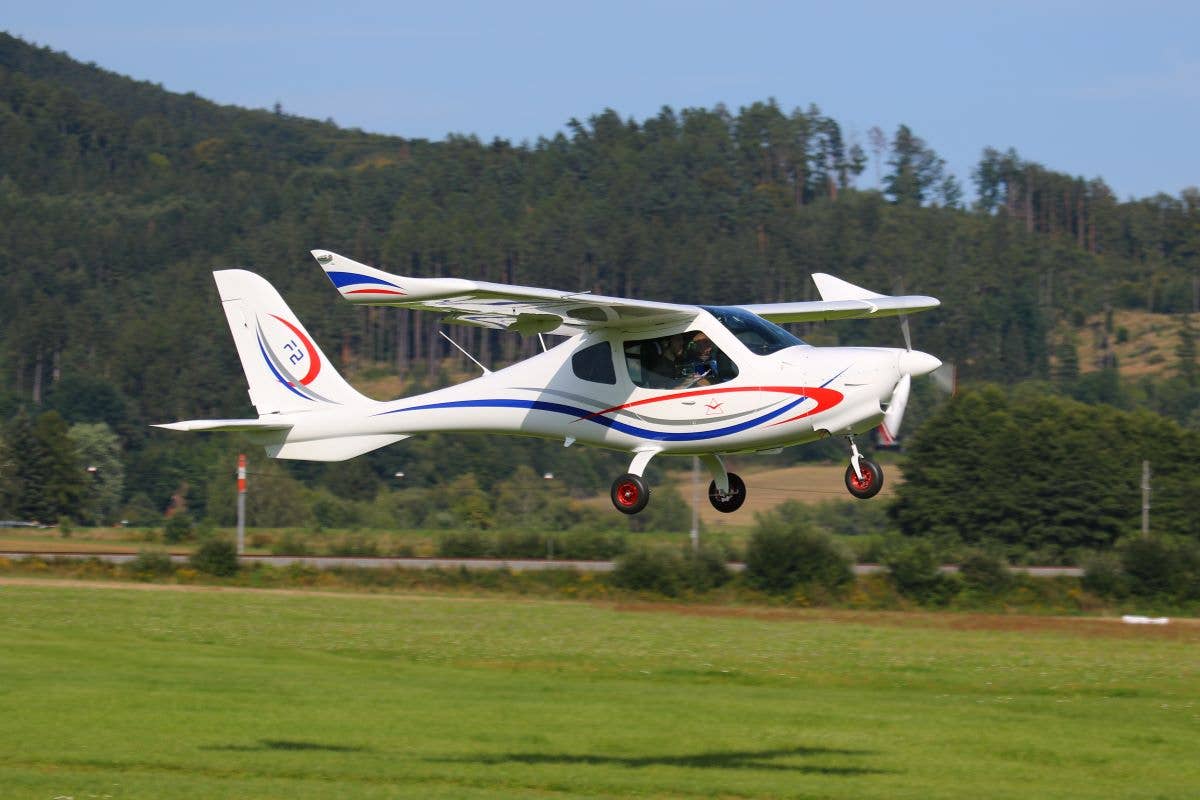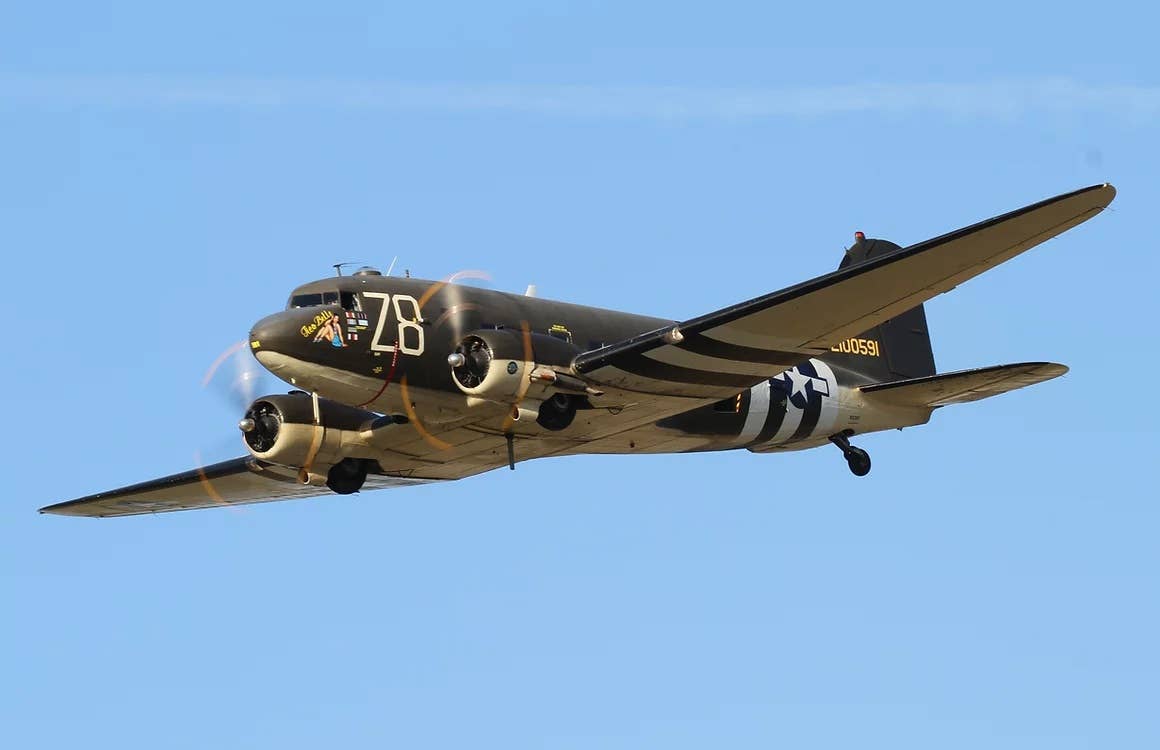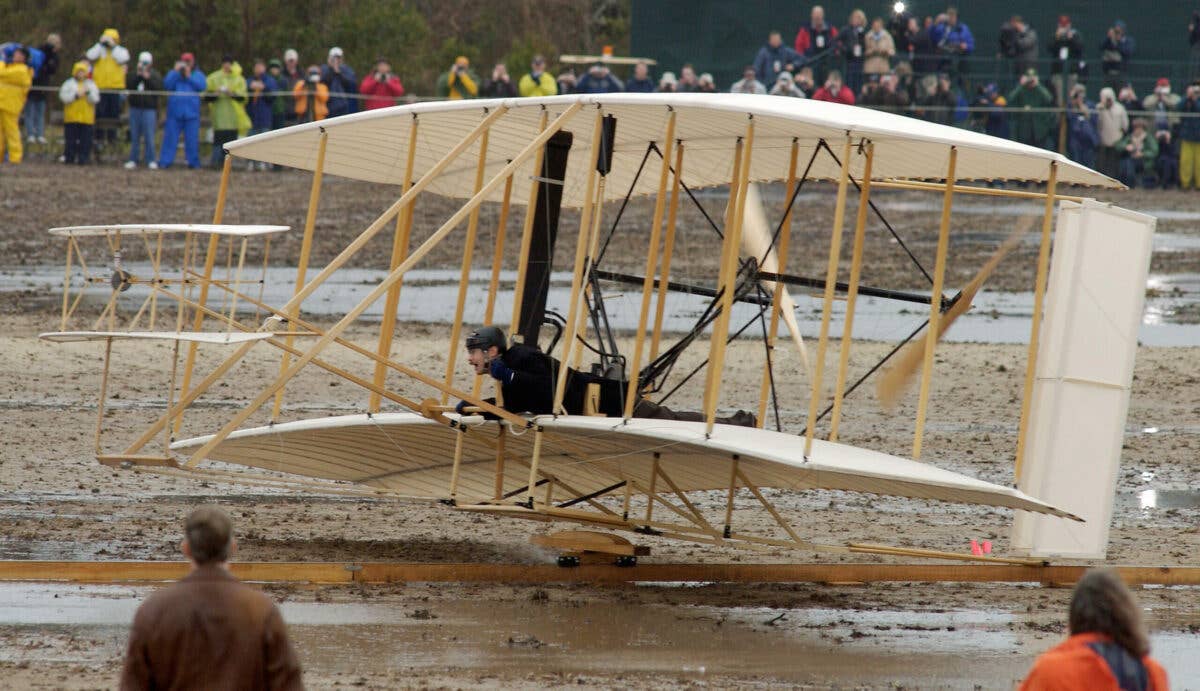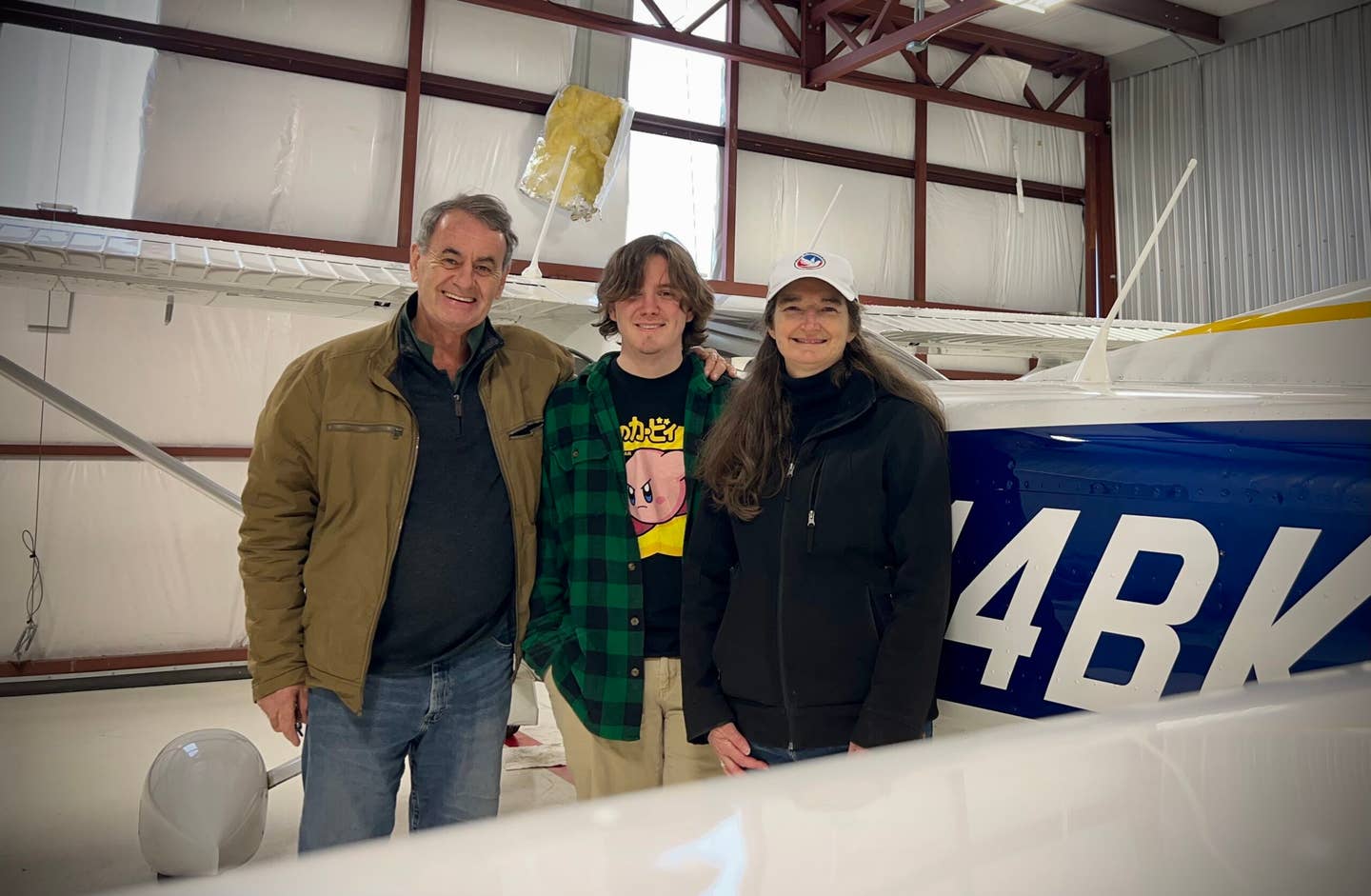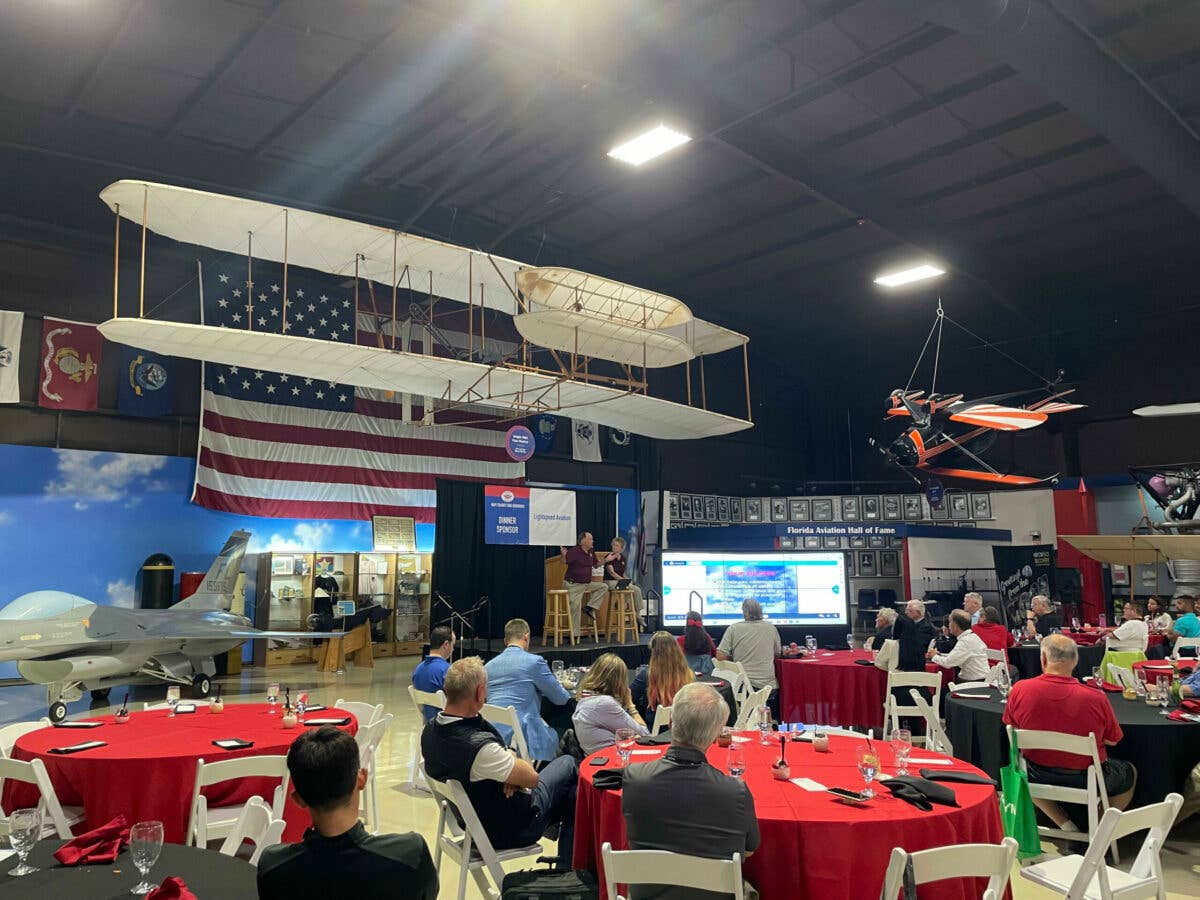Good FLYING Reads: Through the Glass Ceiling to the Stars
Col. Eileen Collins pilots an ongoing mission to inspire youth to space flight.
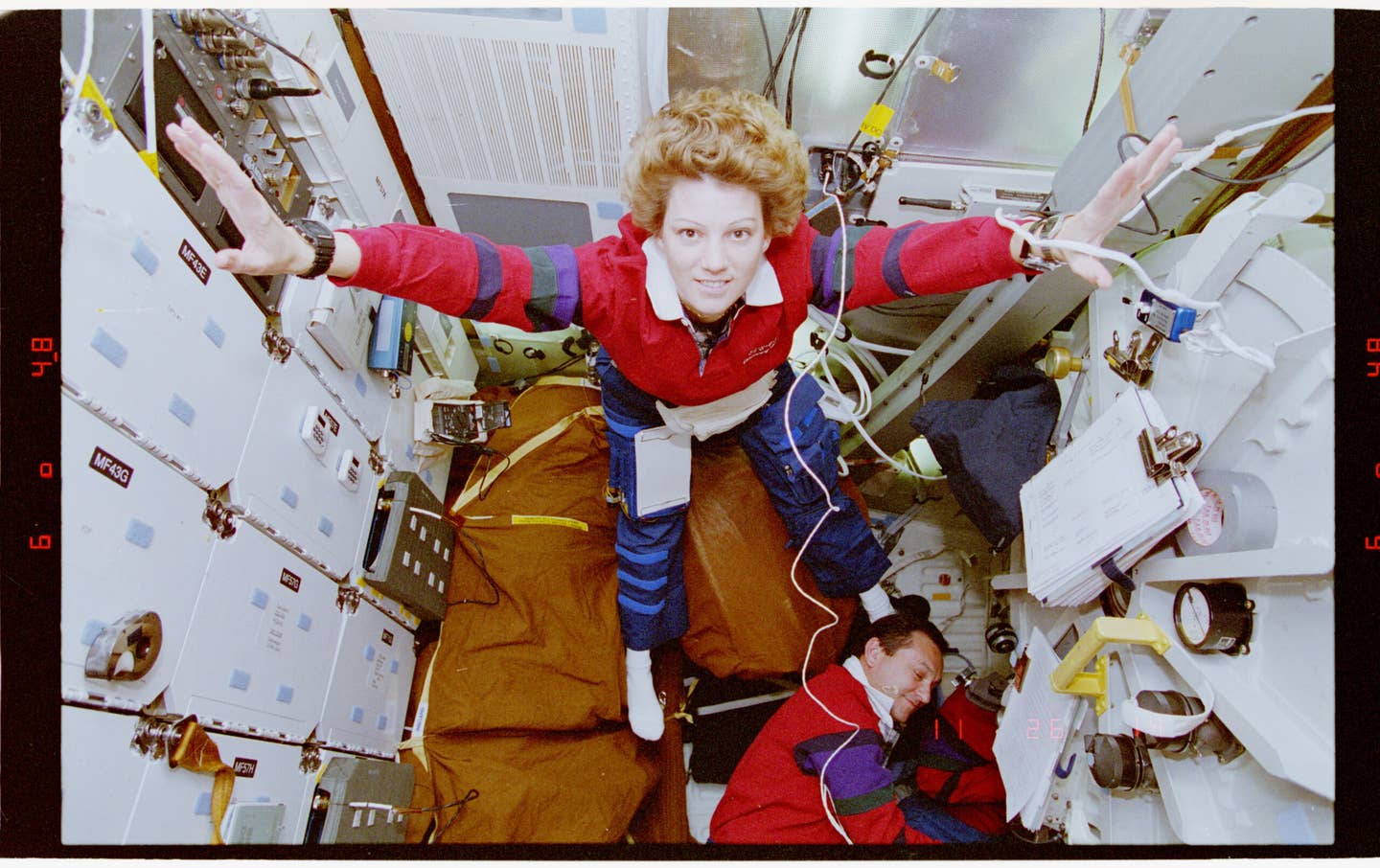
Col. Eileen M. Collins flying in the orbiter Discovery‘s middeck with Russian cosmonaut Vladimir G. Titov, mission specialist, in the background. [Courtesy: National Archives]
A young girl in a modest home in Elmira, New York, laid in bed looking at the ceiling and dreaming of the stars. At the time, she didn’t need to know the path that would take her there, only that she felt completely entranced by the idea of space.
Propelled by this dream that only appears simple on the surface, Col. Eileen M. Collins (USAF, retired) had no clear indication about how to get there. At the time—June 1974—when she graduated from high school, there were no women pilots active in the U.S. Air Force; the Women Airforce Service Pilots (WASP) had been disbanded in late 1944 as the Allies approached the close of World War II.
But Collins saved up and took flying lessons, spurred on by her proximity to the soaring Mecca of Harris Hill, New York. She identified each step along the way that would form her path to space: completing a degree, joining the military, and gaining the flight experience needed to go to test pilot school.
And at each intersection, where a failed test or medical exam—or a discouraging decision—could affect her trajectory, the diligence, application, and trustworthiness she’d cultivated conspired with those stars to put her in line to become the first U.S. woman to pilot a spacecraft.
That fact seems almost coincidental, and she wears the honor as a responsibility rather than an ego-driven accolade. And that’s one of the reasons why she’s successful as a leader—and particularly a leader who would go on to command two space shuttle missions, including the return to spaceflight mission, STS-114 in July 2005 aboard Discovery, following the loss of Columbia in February 2003.
Through the Ceiling to the Stars
Collins waited to write her book, Though the Glass Ceiling to the Stars: The Story of the First American Woman to Command a Space Mission, until more than a decade after her retirement from the USAF in 2005 and NASA in 2006. She’d met co-author Jonathan H. Ward, and that formed the final push to put her story in print.
In the book, she weaves the reflections on spaceflight with her personal memories and mission observations into a narrative that reads as a case study on leadership.
She tells it against the most thrilling of backgrounds—an Air Force career as an instructor and test pilot, and with NASA, flying the T-38 and commanding the space shuttle.
The Shiny Part Above the Surface
The differences (and similarities) between piloting a spacecraft versus piloting an aircraft struck me—along with Collins’ even-keeled approach to handling the publicity circus surrounding her milestone flights. While she understood her role in public relations before and after each mission, she stuck to the mission—and only gained a sense of comfort in her public-facing role once she aligned it with the greater purpose of inspiring youth to space flight.
The general public would see the headline interviews, on The Tonight Show with Jay Leno, and the Oprah Winfrey Show, and the White House visit—and they capture only a two-dimensional picture of a person or a role that puffs into smoke. It’s the shiny part of the iceberg above the surface—and belies all of the hard work it took to get there and succeed.
The Hard Work Underneath
In Collins’ case, this feels particularly true. The steps to achieve the dream included service to her country—the best exchange of sweat equity for a pilot certificate on the planet (and off, apparently)—and the effort to study what she was entrusted to learn. There’s no quick app for acquiring the knowledge to pilot the successive aircraft and spacecraft she instructed in and commanded—no fire hose will deliver what a pilot needs to bring to the mission in terms of skill, rather than just a checklist of tasks.
Collins contends that she possessed no special mathematical talent or athletic aptitude, but instead she credits the diligence to apply herself to studying all she could, reading all she could, and analyzing mistakes in a four-step process: to acknowledge them, learn from them, apply new procedures, and move on.
"I am interested in learning more about how the atmosphere, the sun, and the Earth’s magnetic field are contributing to climate changes.”
Col. Eileen M. Collins (USAF, retired)
The good news? That kind of effort is within most anyone’s grasp. If you’re blessed enough to be born in the U.S. (or a country with a similar aviator’s pathway available), you can try for your dream. The path may not be laid out for you, like a direct route, but might instead take a few diverting waypoints along the way.
Now that we witness space opening up beyond the halls of NASA, there is good within this expansion, as Collins explained in an interview with FLYING. “I strongly believe it is a good thing that more and more people are experiencing space,” Collins said. “Of course, not all these people will be professionals, and most of them certainly will not be pilots. For now, those with the resources to ‘buy’ a seat on a space mission will be very few, but these missions are needed.
“As more people go to space, the cost will come down and the missions will become safer. It will take years and even decades, but I believe more middle-class folks will have the opportunity to experience “zero-g.”
But there is a distinction that remains, she said. “I believe the term ‘astronaut’ should apply only to those who are professionals. There should be a more descriptive term for someone who goes on a one-time mission…I know the general public understands this.”
What Really Mattered
Once upon a time, all astronaut candidates for the pilot slot on the space shuttle had to log time in the test pilot school associated with their branch of the military. For those in the USAF, this was the Air Force Test Pilot School at Edwards Air Force Base in California.
There’s a solid reason for this, since every astronaut to a certain extent is proving new ground with each mission. For Collins, the positions of test pilot and astronaut intersected with her most important mission of the four forays into space that she notched: the return to spaceflight following the Columbia tragedy.
Compartmentalization is critical to both types of pilots—but most would think it reaches a new level for astronauts. Collins agrees, to a point.
“In my opinion, if there is a difference for an astronaut, it would be the length of time in space: which can be one to two weeks or as long as a year. I think of compartmentalization as a way to divide up your tasks and focus on the most important at the time, while still having the ability to cross-check the others. For an astronaut, the work day is 24 hours, and one must add time to rest and decompress, as well as exercise and sleep. Regardless, the principle is the same.
“I once had an instructor that told me: “It doesn’t matter how big the smoking hole is, you are still dead.” I learned from him to respect every airplane I fly: whether a Schweizer 2-33 glider, or a space shuttle.”
A View From Above
Finally, in her book Collins describes the "overview effect” felt by astronauts as they see the planet Earth from above. “When separated from Earth, you become even more attuned to Earth,” she wrote. That sense began with her astronaut training.
“We studied the atlas, and compared those maps to actual space photographs of the same region,” she continued in our interview. “We also compared photos from the Skylab program of the early 70s to the shuttle days. You could see how people have changed the Earth by observing deforestation, erosion, and even agricultural patterns.
“Then my first mission ‘put the icing on the cake’ by making it real. The earth-bound studying was an important foundation, but once you see our beautiful planet with your own eyes, the experience cements the importance of taking care of our planet. For [example], I have personally become addicted to recycling and reusing. I know this is only a small part of the solution, but it is something I can do in my own small way to help preserve our resources.”
As far as climate change is concerned, she has a direct experience that drives her thinking. “Astronauts observe that the atmosphere is very thin. The breathable air is only 2 to 3 miles up, a commercial airplane flies about 7 miles up, and a military pilot receives astronaut wings at 50 miles.
“When a person observes how thin the air is, which can be seen from space when the sun goes behind the Earth, it is quite an intimidating experience. The Earth’s atmosphere can be compared to an apple skin on an apple, it is that thin. I am interested in learning more about how the atmosphere, the sun, and the Earth’s magnetic field are contributing to climate changes.”
A unique view from above, indeed.

Sign-up for newsletters & special offers!
Get the latest FLYING stories & special offers delivered directly to your inbox

